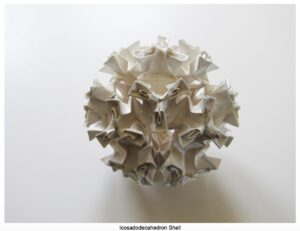Paper 102 Paper 104
See Etymology of Coined Terminology.
Introduction
Section 1: Philosophy of Religion
p1: spiritual unity (6:4.3), (103:1.1), (103:5.12), (141:5.0,1,2), (194:3.17), (195:10.11).
Section 2: Religion and the Individual
p1: See Topical Study page: Abortion and resurrection for the unborn.
p5: psychology appears in eleven paragraphs: (5:5.6), (99:4.8), (101:1.4), (101:2.17), (102: 2.3), (102:4.6), (102:6.8), (103:2.5), (103:6.1), (103:8.3), (196:3.23).
p7,10: See Cross-reference study: Age 16, Child Mind, Childlike, Little Child, and Childish.
p7,9,10: See Ego in The Urantia Book, a Topical Study by Chuck Thurston.
p8: moral judgment(s) is used three times: (102:8.2), (103:2.8), and (133:1.4). ethical standard(s) is used once: (102:8.2).
Section 3: Religion and the Human Race
Section 4: Spiritual Communion
p1: See Ego in The Urantia Book, a Topical Study by Chuck Thurston.
p2: geometrical progression This is the only usage geometr-. Urantia Book reader Brad Hansen-Smith integrates geometry, art, and education by focusing on the sphere/circle.
Section 5: The Origin of Ideals
p4,5: See Ego in The Urantia Book, a Topical Study by Chuck Thurston.
p11,12: See Robert Sarmast video on “The Urantia Religion – Power of Symbolism.” List of quotes used in his presentation.
p12: spiritual unity (6:4.3), (103:1.1), (103:5.12), (141:5.0,1,2), (194:3.17), (195:10.11).
Section 6: Philosophic Co-Ordination
p1: psychology appears in eleven paragraphs: (5:5.6), (99:4.8), (101:1.4), (101:2.17), (102: 2.3), (102:4.6), (102:6.8), (103:2.5), (103:6.1), (103:8.3), (196:3.23).
p8,13: Revelation is the only technique . . .; Faith and reason, unaided by mota . . .: These passages are used in “Logical Consistency vs Personal Creativity,” a special presentation by Chris Halvorson, which was prepared on this subject at the request of conference organizer, Halbert Katzen, for the UBtheNEWS 2010 Education for Outreach conference.
p11: See cross-reference study: So-Called Scinece +.
p14: mystical See Topical Study: Mysticism and Entheogens.
Section 7: Science and Religion
p5: See Topical Study: Genetic Introductions, Mutations, and Evolution: a Urantia Book perspective re: a moral framework for the study.
Section 8: Philosophy and Religion
p3: See: “Were the Alpheus twins subnormal?“, a subtopic of the Topical Study on Genetics and Race,
psychology appears in eleven paragraphs: (5:5.6), (99:4.8), (101:1.4), (101:2.17), (102: 2.3), (102:4.6), (102:6.8), (103:2.5), (103:6.1), (103:8.3), (196:3.23).
Section 9: The Essence of Religion
p1: See Topical Study: Sociology (+ all permutations).
p11: wine See Topical Study: Mysticism and Entheogens.
Additional notes:
Matthew Block suggests that the following authors were influential in writing of this Paper and has prepared a parallel chart:
A. Campbell Garnett, A Realistic Philosophy of Religion (Chicago: Willett, Clark & Company, 1942) Oxford Reference page.
John Baillie, The Interpretation of Religion: An Introductory Study of Theological Principles (New York: Charles Scribner’s Sons, 1928) Wikipedia page.
Edwin Lewis, God and Ourselves: A Plea for the Reality, Adequacy and Availability of God (New York: The Abingdon Press, 1931) Wikipedia page.
Albert C. Knudson, The Doctrine of God (New York: Abingdon-Cokesbury Press, 1930) Wikipedia page.

